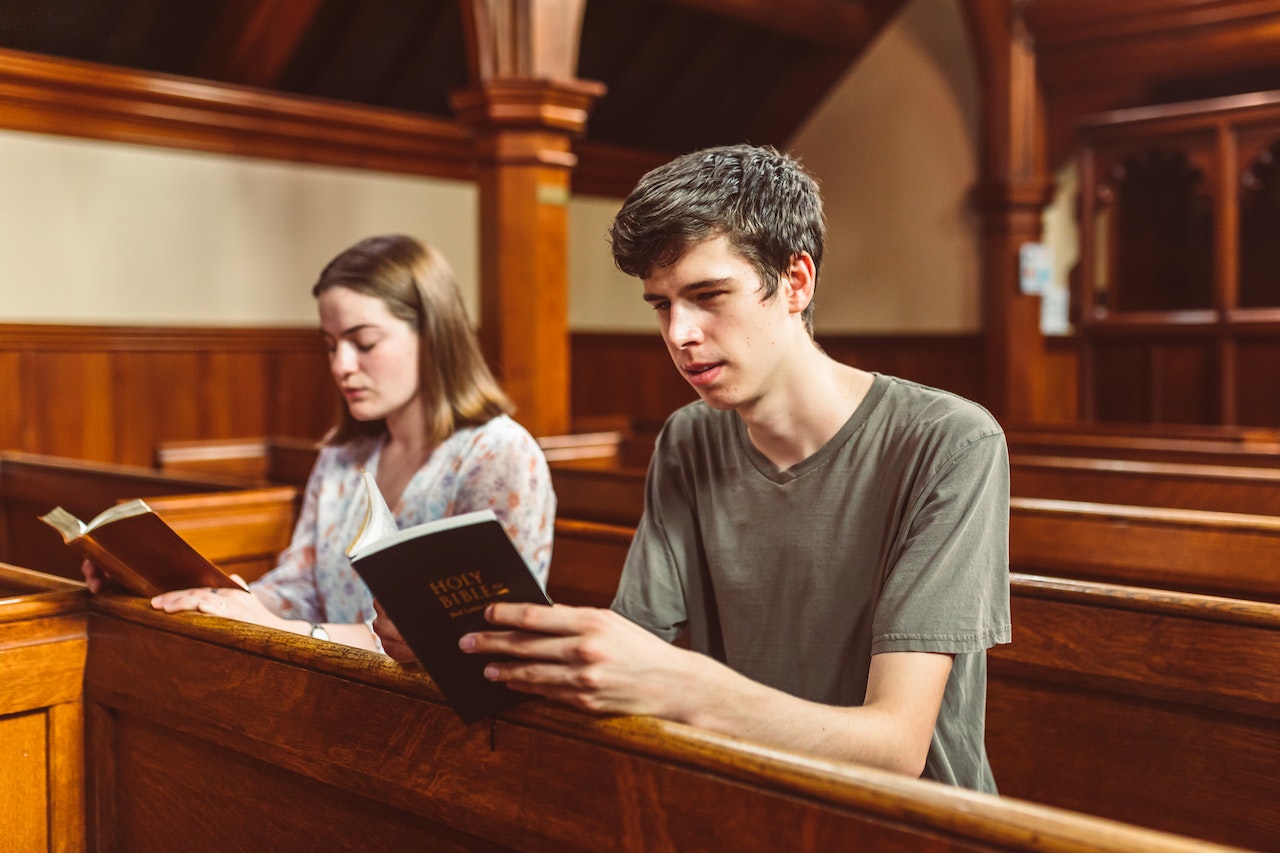In the Bible, David is described as a skilled and passionate dancer. His dancing is mentioned in the Old Testament, specifically in the book of 2 Samuel and the book of Psalms.
Table of Contents
The Significance of David’s Dance in Worship
How did David dance in the Bible? Well, let’s dive into the significance of David’s dance in worship. David, the beloved king of Israel, was known for his passionate and exuberant worship. In the book of 2 Samuel, we find a remarkable account of David’s dance before the Lord.
It all began when David successfully brought the Ark of the Covenant back to Jerusalem. The Ark, a symbol of God’s presence among His people, was a sacred object that held great significance. As the Ark was being brought into the city, David couldn’t contain his joy and excitement. He stripped off his royal robes and danced with all his might before the Lord.
David’s dance was not a mere display of physical movement; it was a heartfelt expression of his love and devotion to God. He danced with such fervor that his wife, Michal, looked down on him with disdain. She criticized him for his undignified behavior, but David was undeterred. He responded, “I will celebrate before the Lord. I will become even more undignified than this” (2 Samuel 6:21-22).
David’s dance teaches us an important lesson about worship. It reminds us that worship is not about appearances or conforming to societal norms. It is about wholeheartedly surrendering ourselves to God, regardless of what others may think. David’s dance was a genuine expression of his love for God, and it pleased the Lord.
Furthermore, David’s dance was a celebration of God’s faithfulness and goodness. He recognized that it was God who had given him victory and brought the Ark back to Jerusalem. David’s dance was a way of acknowledging God’s sovereignty and giving Him the glory He deserved.
In our own lives, we can learn from David’s example. We may not physically dance before the Lord, but we can worship Him with the same passion and joy. Our worship can take many forms – singing, praying, reading Scripture, or even serving others. The key is to do it with a sincere heart, offering our praise and adoration to God.
David’s dance also teaches us about the power of worship to bring about transformation. As David danced, the atmosphere in Jerusalem shifted. The people were filled with awe and reverence for God. His dance created an environment where the presence of God was tangibly felt.
When we worship God with all our hearts, something supernatural happens. Our worship becomes a catalyst for change – in us and in the world around us. It opens the door for God to move in our lives, to heal, restore, and bring breakthrough. David’s dance reminds us that worship is not just a ritual; it is a powerful spiritual weapon.
In conclusion, David’s dance in the Bible holds great significance in worship. It teaches us about the authenticity of worship, the celebration of God’s faithfulness, and the transformative power of worship. Let us be inspired by David’s example and approach our own worship with passion, joy, and a sincere heart. May our worship create an atmosphere where God’s presence can dwell and bring about transformation in our lives and in the world.
Exploring the Cultural Context of David’s Dance in the Bible
Have you ever wondered how David danced in the Bible? The story of David’s dance is found in the book of 2 Samuel, and it provides us with a glimpse into the cultural context of his time. David, who was the king of Israel, had just successfully brought the Ark of the Covenant back to Jerusalem. This was a momentous occasion, and David couldn’t contain his joy.
In the Bible, it is described that David danced before the Lord with all his might. This raises the question of what exactly his dance looked like. To understand this, we need to delve into the cultural context of ancient Israel. Dancing was an integral part of their worship and celebrations. It was a way for the people to express their joy and gratitude to God.
In ancient Israel, dancing was often accompanied by music. The people would play various instruments such as tambourines, lyres, and harps. This created a lively and festive atmosphere, encouraging everyone to join in the celebration. David, being a skilled musician himself, would have been familiar with these instruments and likely played a role in leading the music.
The dance itself would have been energetic and exuberant. It was not a formal or choreographed dance like we might see today. Instead, it was a spontaneous expression of joy and praise. People would move their bodies freely, leaping, twirling, and clapping their hands. It was a physical manifestation of their inner emotions, a way to show their love and devotion to God.
David’s dance was particularly significant because of the occasion. The Ark of the Covenant represented the presence of God among the people. Bringing it back to Jerusalem was a moment of triumph and a symbol of God’s favor. David’s dance was a way for him to honor and glorify God for this blessing.
It is important to note that not everyone was pleased with David’s dance. His wife, Michal, criticized him for his uninhibited display. She thought it was undignified for a king to dance so freely in front of the people. However, David defended his actions, stating that he was dancing before the Lord, not the people. He believed that his dance was an act of worship and a genuine expression of his love for God.
This story teaches us an important lesson about worship. It reminds us that worship is not about appearances or following a set of rules. It is about the condition of our hearts and our sincere desire to honor God. David’s dance was a reflection of his deep love and gratitude towards God, and it serves as an inspiration for us to worship God with all our might.
In conclusion, David’s dance in the Bible was a spontaneous and exuberant expression of joy and praise. It was a reflection of the cultural context of ancient Israel, where dancing was an integral part of worship and celebrations. David’s dance before the Lord with all his might teaches us the importance of genuine and heartfelt worship. It encourages us to let go of our inhibitions and worship God with all our being. So, let us take a cue from David and dance before the Lord with joy and gratitude in our hearts.
Lessons We Can Learn from David’s Dance in the Scriptures
David, the beloved king of Israel, was known for his many accomplishments and his deep devotion to God. One of the most memorable moments in David’s life was when he danced before the Lord with all his might. This powerful act of worship is recorded in the Bible and holds valuable lessons for us today.
In the book of 2 Samuel, we find the account of David bringing the Ark of the Covenant back to Jerusalem. As the Ark was being carried, David couldn’t contain his joy and excitement. He stripped off his royal robes and danced before the Lord in a linen ephod. This uninhibited display of worship shocked and even offended some onlookers, including his own wife Michal.
So, what can we learn from David’s dance? First and foremost, we see that David’s dance was a genuine expression of his love for God. He didn’t dance to impress others or to gain their approval. His dance was a heartfelt response to the presence of God. It reminds us that worship is not about putting on a show or conforming to societal expectations. It is about connecting with God in a personal and authentic way.
David’s dance also teaches us the importance of humility. Despite being the king of Israel, David didn’t hesitate to humble himself before God. He didn’t let his position or status get in the way of his worship. This serves as a reminder that no matter who we are or what we have achieved, we are all equal before God. Humility allows us to approach Him with reverence and awe, acknowledging that He is the one who deserves all the glory.
Furthermore, David’s dance demonstrates the power of surrender. In that moment, David let go of all inhibitions and surrendered himself completely to God. He didn’t hold back or worry about what others might think. This act of surrender is a challenge for us today. It calls us to let go of our fears, doubts, and self-consciousness and surrender ourselves fully to God’s will. When we surrender to Him, we open ourselves up to His transformative power and experience true freedom in worship.
Another lesson we can learn from David’s dance is the importance of celebrating God’s presence. David’s dance was a celebration of the Ark of the Covenant, which symbolized God’s presence among His people. It was a joyful expression of gratitude for God’s faithfulness and goodness. In our own lives, we should also take time to celebrate and rejoice in God’s presence. Whether through singing, dancing, or simply expressing our gratitude, celebrating God’s presence reminds us of His love and faithfulness.
Lastly, David’s dance teaches us about the power of unity in worship. As David danced, he didn’t do it alone. He was surrounded by a community of believers who shared in his joy and worshiped alongside him. This highlights the importance of coming together as a community to worship God. When we worship together, we encourage and inspire one another, creating an atmosphere where God’s presence can be experienced in a powerful way.
In conclusion, David’s dance in the Bible holds valuable lessons for us today. It teaches us about genuine worship, humility, surrender, celebrating God’s presence, and the power of unity in worship. As we reflect on David’s dance, may we be inspired to worship God with all our hearts, just as David did.
Understanding the Spiritual Expression of David’s Dance in the Old Testament
How did David dance in the Bible?
When we think of dancing, we often picture joyful celebrations, rhythmic movements, and a sense of freedom. In the Bible, one of the most famous dancers is King David. His dance is mentioned in the Old Testament, specifically in the book of 2 Samuel. But what was the significance of David’s dance? What does it tell us about his spiritual expression?
To understand David’s dance, we need to delve into the historical context. David was not just a king; he was also a musician and a poet. He had a deep connection with God and expressed his emotions through his art. In the book of Psalms, which is attributed to David, we find numerous references to singing and dancing as forms of worship.
In 2 Samuel 6, we read about an event where David danced before the Lord. The Ark of the Covenant, which symbolized God’s presence, was being brought back to Jerusalem. David, filled with joy and gratitude, couldn’t contain his emotions. He stripped off his royal robes and danced with all his might.
David’s dance was not a carefully choreographed performance; it was a spontaneous expression of his love for God. He danced with abandon, not caring about how he looked or what others might think. His focus was solely on God, and he let his body move freely in response to the music and the presence of the Ark.
This uninhibited dance of David was a powerful statement of his humility and surrender before God. It showed his willingness to let go of his pride and position, acknowledging that everything he had was a gift from God. David’s dance was an act of worship, a way of saying, “I am nothing without you, Lord.”
But David’s dance was not just about humility; it was also a celebration of God’s faithfulness. Throughout his life, David had faced numerous challenges and enemies, yet God had always been by his side. The return of the Ark to Jerusalem was a symbol of God’s presence and victory. David’s dance was a way of rejoicing in God’s goodness and expressing his gratitude.
David’s dance also had a profound impact on those who witnessed it. Michal, David’s wife, criticized him for his undignified behavior. She saw his dance as inappropriate for a king. But David’s response was firm. He explained that he was dancing before the Lord, not before people. He didn’t dance to please others or to gain their approval; he danced to honor God.
In our modern world, where dancing is often associated with entertainment and self-expression, it can be easy to overlook the spiritual significance of David’s dance. But his example reminds us that dancing can be a powerful form of worship. It is a way to connect with God on a deeper level, to express our emotions, and to celebrate His goodness.
So, the next time you feel moved by the presence of God, don’t be afraid to dance like David. Let go of your inhibitions, surrender your pride, and express your love for God through the movement of your body. Dance with all your might, knowing that you are joining a long line of worshippers who have used this ancient art form to honor and glorify God.
Conclusion
In the Bible, David is described as dancing with joy and exuberance before the Lord.



